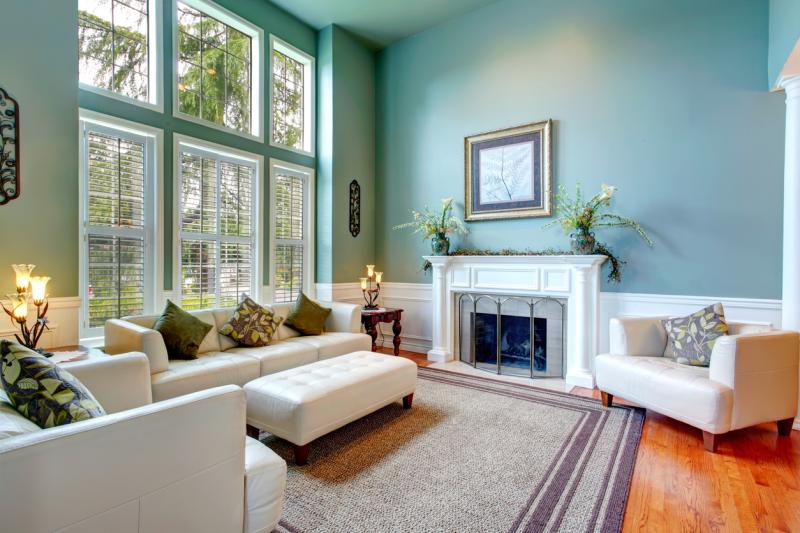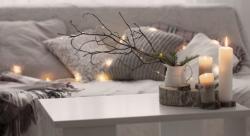Ideal Home Show and charity partner Maggie’s reveal what the perfect room to boost yourmental wellbeing really looks like...
New research released today reveals that anxiety is on the rise due to clutter in homes, which is making over half (52%) of Brits feel anxious, while more than a third (34%) put it down to their home’s unfinished interior design. According to the findings from Ideal Home Show, two in five (39%) have decluttered their home to improve their mental wellbeing, 56 per cent believe that when their clothes are in order in their wardrobe it makes them feel better and half say they feel calmer when they have plants in their home.
Architect Diego Seisdedos knows the impact interior design can have on mental and physical wellbeing through his work in-house at cancer charity, Maggie’s, Ideal Home Show’s charity partner. In collaboration with the exhibition, Diego has created a design that shows the perfect open plan living and dining space to help boost your mental health.
Talking about the design, he said: “Rooms and buildings have the power to impact a person’s physical and emotional well-being. Maggie’s, which runs specially-designed centres to support people living with cancer as well as their family and friends, is only too aware of this. Various elements of our buildings can be incorporated into a home environment, with really simple tricks such as bringing the outside space in with plants and greenery and using bright cushions, blankets and artwork to help lift a space, complimenting the layout and creating a homely, uplifting place to relax.”
Here are the top interior design and renovation tips that will ensure your home environment makes you feel happy and calm:
- Choose flooring that will lift the space. Wood flooring that’s painted white works best because it reflects the light and helps to lift the room. Choosing to paint it white also means you can add colour in other places, for example with bright and interesting rugs which help to offset the floor.
- Allow natural light in from both sides of the room. When designing a home from scratch, positioning windows on two sides of the room allows more natural light to flood in. A floor-to-ceiling window on one side is ideal so that it offers a lovely, calming view to the outdoors, while you can place a chair next to a smaller window that’s a little higher on the wall on another side of the room to sit and look out. A skylight is also great, especially at night time if you live in an area with low light pollution so that you can look out and see the stars or sunrise.
- Choose colour carefully. Colour can have a massive impact on the way we feel. Red is linked to hostility and may make you feel anxious, whereas white signifies cleanliness and purity. White, pale and neutral shades on the walls are great for bringing a sense of calmness, and they also allow you to add colour in other places - even the window or door frames can become colourful.
- Create different spaces within the room. Open plan rooms fully open up the space and allow light to filter through. That said, separate spaces can still be created inside the room without partition walls by splitting it into different levels, for example with a few steps between the dining space and living area.
- Don’t use overhead lighting. Lighting overhead can create strange shadows and down-lighting, so lamps are preferable to boost your mental wellbeing. Side lights are less austere and create a homelier environment, and mid-level lamps also spread the light in a more ambient way.
- Buy furniture with wooden fittings and a mix of textures. When it comes to the furniture, a mix of rounded and square edges help to contrast and make the space more interesting. Sturdy wooden frames – preferably oak – are best and you should keep it simple with a coffee table, sideboard and a couple of side tables, and two low armchairs and a sofa with wooden fittings to fill the space nicely. You can really bring the room to life with lots of colour - greens, pinks, and oranges all in similar palettes liven the space.
- Add ornaments and trinkets that bring back good memories. Personal possessions help to add character to your home – they may even be mementos from places you’ve travelled or be pieces that have strong sentimental value. This will help to remind you of happy memories, but it’s important not to clutter your space too much. Ceramic fruit bowls and vases work better than glass, and lots of brightly coloured artwork on the walls help to brighten and lift the spac
- Get rid of screens. The perfect mood-boosting room should not have any TVs, as too much screen time has been linked to increased anxiety1. Similarly, avoid having a clock on the wall as this makes the space more relaxing and less time-pressured. If you really need to, you can check the time on a watch or phone.
- Bring the outside in. Position plants around the room to bring a sense of feeling more connected to nature. It’s a good idea to surround the floor to ceiling window with an array of plants, to create a more natural outside-in experience.
- Declutter. Ensure the space feels clear by avoiding shelving, which can cause clutter, increasing anxiety. Pack away any paperwork or files which might encourage you to think about your to do list, and instead keep the space clean and tidy to maximise its mood-boosting ability.
Nicola Lewis, founder of This Girl Can Organise and author of Mind over Clutter, who will be leading Mind Over Clutter talks at the Ideal Home Show said: “The pressures of modern life and balancing a busy work and home life can sometimes become over-bearing. The simplest thing to do to ensure the rooms in your house help boost your mood rather than adding to the daily pressure, is to keep surfaces clean and tidy.”
For more advice on how to design the perfect room to boost your mood visit Maggie’s stand at the Ideal Home Show or visit the Mind Over Clutter talks on Thursday 28th March between 6pm-6.45pm and 8pm-8.45pm. Tickets are available to buy now via the Ideal Home Show website https://www.idealhomeshow.co.uk/.








